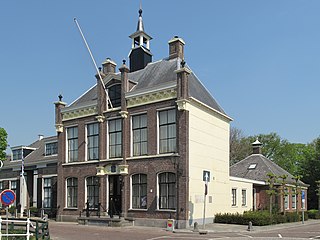
Mauritius, officially the Republic of Mauritius, is an island country in the Indian Ocean, about 2,000 kilometres off the southeastern coast of East Africa, east of Madagascar. It includes the main island, as well as Rodrigues, Agaléga, and St. Brandon. The islands of Mauritius and Rodrigues, along with nearby Réunion, are part of the Mascarene Islands. The main island of Mauritius, where the population is concentrated, hosts the capital and largest city, Port Louis. The country spans 2,040 square kilometres (790 sq mi) and has an exclusive economic zone covering 2,300,000 square kilometres.
The known and sometimes formally documented history of Mauritius begins with its possible discovery by Austronesians under the Austronesian expansion from pre-Han Taiwan, circa 1500 to 1000 BC, and then by Arabs,, followed by Portuguese and its appearance on European maps in the early 16th century. Mauritius was successively colonized by the Netherlands, France and Great Britain, and became independent on 12 March 1968.

Hendrik Brouwer was a Dutch explorer and governor of the Dutch East Indies.

IJlst is a city in Friesland, Netherlands. It is located about 3 km southwest of Sneek. It lies within the municipality of Súdwest-Fryslân and had a population of approximately 3,140 in January 2017.
Opperhoofd is a Dutch word that literally translates to "upper-head", meaning "supreme headman". The Danish cognate overhoved, which is a calque derived from a Danish pronunciation of the Dutch or Low German word, is also treated here. The standard German cognate is Oberhaupt.
Adriaan van der Stel was the opperhoofd of Mauritius from 1640 to 1645. He was succeeded by Jacob van der Meersch.
Reinier or Reiner Por was the Dutch opperhoofd or governor of Mauritius from 1648 to 1653. Five years after his death the first Dutch colony was briefly abandoned, to be re-established at the same location in Grand Port in 1666.
Abraham Momber, also known as Abraham Momber van de Velde, was the last commander (opperhoofd) of the Dutch East India Company settlement on Mauritius. He followed Roelof Deodati as the de facto Dutch governor on November 25, 1703. On November 15, 1707, the VOC's premises, goods, and administration were almost entirely destroyed by a fire.

The coat of arms of Mauritius are stipulated in the "Mauritius Laws 1990 Vol.2 SCHEDULE ". In the lower left quarter is a key and on the right-hand side is a white star, which are referred to in the Latin motto "Stella Clavisque Maris Indici" meaning "Star and Key of the Indian Ocean".

Willem Adriaan van der Stel was an Extraordinary Councillor of the Dutch East Indies, and Governor of the Cape Colony, a way station for the Dutch East India Company (VOC), from 23 January 1699 to 1707. He was dismissed after a revolt and was exiled to the Netherlands.
Zacharias Wagenaer was a German-born Dutch clerk, illustrator, merchant, member of the Court of Justice, opperhoofd of Deshima and the only German governor of the Dutch Cape Colony. In 35 years he traveled over four continents.
Maximiliaan le Maire was a merchant/trader and official of the Dutch East India Company.
Mauritius has been administered by various colonial head since it was discovered until it became an independent state;

According to the 2011 census, Christianity was adhered to by 31.7% of the population of Mauritius; 80.3% of these were Roman Catholics.

Roelof Diodati was a governor of Dutch Mauritius in the late 17th century.

Mauritius was an official settlement of the Dutch East India Company on the island of Mauritius between 1638 and 1710, and used as a refreshing station for passing ships. It was already frequented by Dutch ships from 1598 onwards, but only settled in 1638, to prevent the French and the British from settling on the island.

Between independence in 1968 and becoming a republic in 1992, Mauritius was an independent sovereign state that shared its head of state with the United Kingdom and other states headed by Elizabeth II.

The governor of Mauritius was the official who governed the Crown Colony of Mauritius during the British colonial period between 1810 and 1968. Upon the end of British rule and the independence of Mauritius in 1968, this office was replaced by the governor-general, who represented the British monarch and not the Government of the United Kingdom as did the governor. The office of Governor-General was itself abolished in 1992 and replaced by the post of President when Mauritius became a republic.

The Governor of Isle de France was an official who ruled Isle de France during the French colonial period between 1721 and 1810. After the Dutch abandoned Mauritius, the island became a French colony in September 1715 when Guillaume Dufresne d'Arsel landed and took possession of it, naming the island Isle de France. The French government turned over the administration of Mauritius to the French East India Company, but the island remained bereft of Europeans until 1721. Furthermore, until 1735, Isle de France was administered from Île Bourbon, now known as Réunion.
Lubbert Jan baron van Eck was the 31st Governor of Ceylon during the Dutch period in Ceylon.











